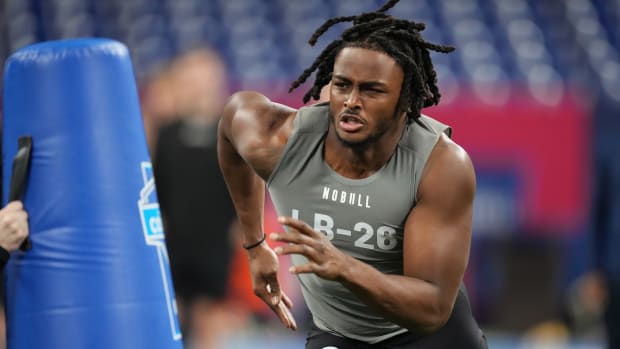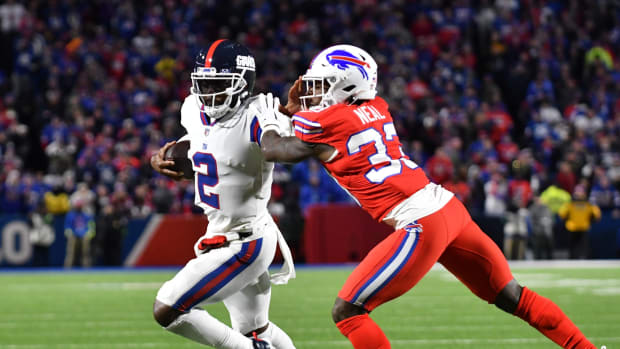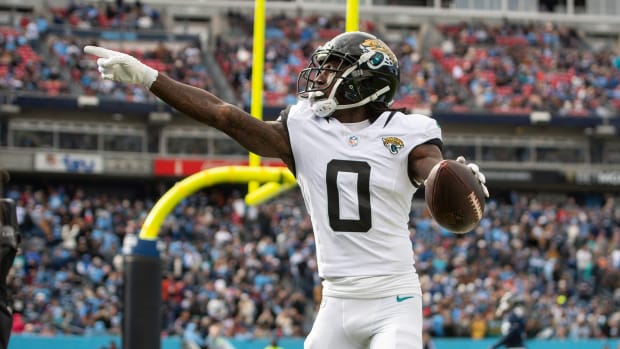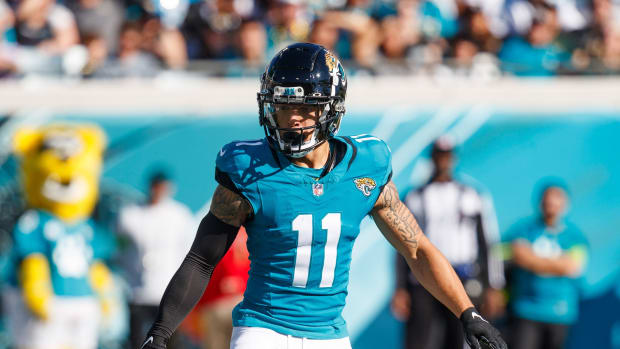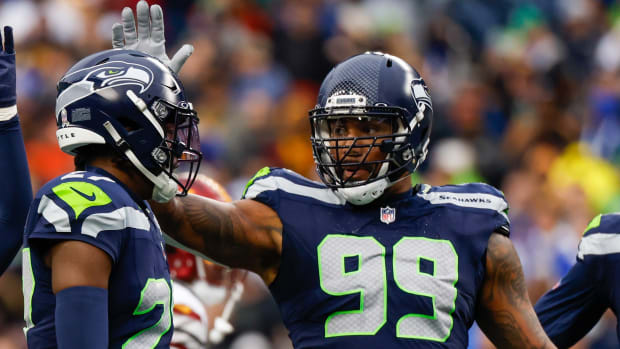NFL Jersey Ads Could Be Lucrative, But Complicated
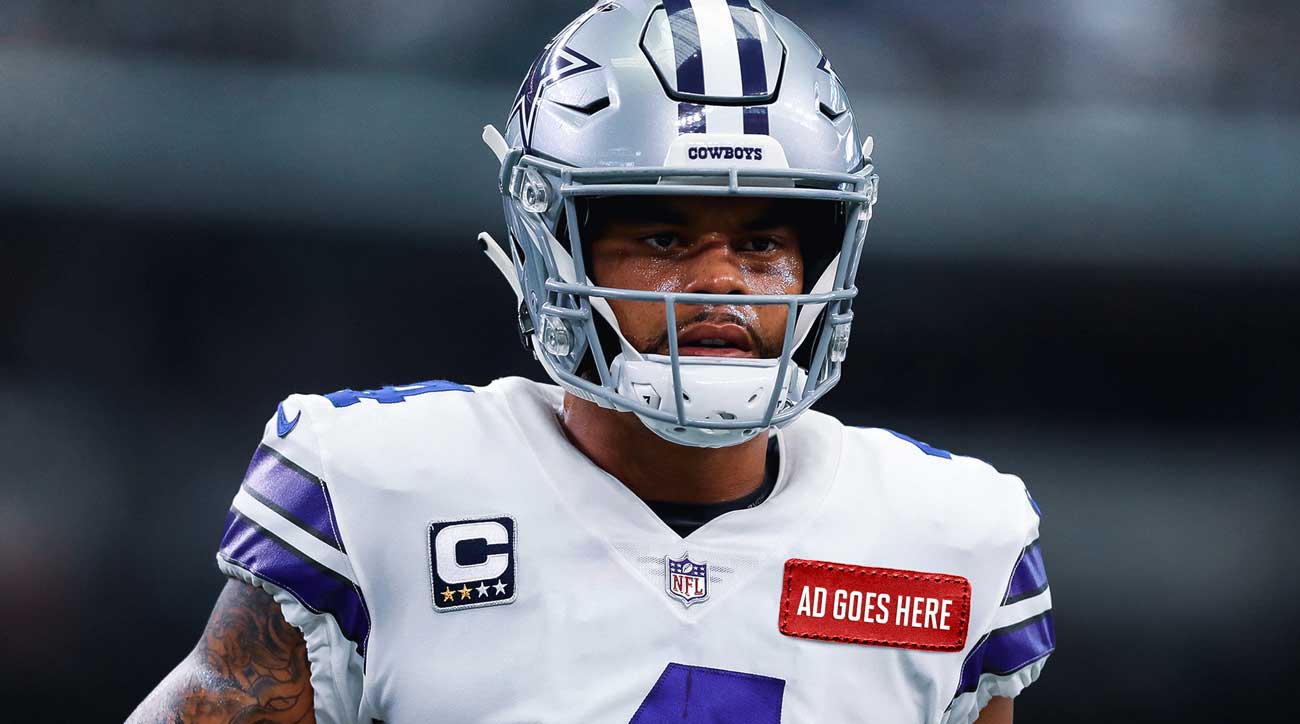
If you view the NFL and its teams as a greedy business, you’d have a pretty good point. Teams raise ticket prices even after losing seasons. They put city councils in chokeholds for tax dollars to renovate existing stadiums or make new ones entirely. The league pays its commissioner more than $30 million a year while fighting tooth and nail to avoid paying retired players. It wishes to move the combine from perfectly-good and entirely-convenient Indianapolis to Los Angeles for more attention and thus more money.
But there’s one resource the NFL has not tapped. By an extremely conservative measure, jersey advertisement patches could net the league’s teams and players $200 million annually in added revenue. And the NFL would hardly be a pioneer in this space.
The NBA implemented a jersey patch program in 2017 that allowed teams to negotiate individual deals with their own sponsors. The league has seen such success with this program, originally a three-year pilot, that it was extended indefinitely at the last owners meeting, says Amy Brooks, the NBA’s president of team marketing and business operations and chief innovation officer. Advertisements essentially are the jerseys in MLS, international soccer and the WNBA. Motorsports turn cars and drivers into high-speed advertisements and golfers are walking ads as well. MLB has dipped its toe in the water with ads on sleeves and helmets in its games in Japan and Mexico since the early 2000s.
Ten years ago, the NFL began adding sponsorship patches to practice jerseys. At the time, it was thought by some that the game-jersey patch was imminent. But a decade later, it doesn’t seem like the most profitable league in American sports is any closer to patchwork.
“Never say never, but there are no current plans to pursue or explore,” a league spokesman told The MMQB earlier this week.
There are myriad unanswered questions and logistics to sort through, but one team executive figures “any resistance to it today would be much less than it was 15, 20 years ago.”
A seemingly natural time for the NFL to introduce a jersey patch program would be during the next round of collective bargaining negotiations. The current CBA ends following the 2020 season and the discussions are expected to be contentious.
“It’s all about trying to find new revenue streams, so that when you do a new contract you can distribute new income and everyone’s happy,” said Dr. Bill Sutton, director of the University of South Florida’s sport and entertainment program. “Owners and players are happy.
“Now that the NBA threw the rock in the water and made it ripple, now the other leagues are looking at it, saying look what the NBA did and it didn’t seem to do any damage or any reciprocal harm from this. Maybe we should get our feet wet.”
As of March, when the Oklahoma City Thunder teamed with Love’s Travel Shops, all 30 NBA teams now have a patch sponsor. Here are some of the NBA’s parameters: The patches must be no larger than 2.5-by-2.5 inches. Alcohol, tobacco, gambling, political ads and competitors of Nike (which holds the jersey rights) are prohibited, and teams negotiate their own deals, which reportedly range from $5 million to $20 million per year.
“Two-thirds of these 30 partners are global brands, and two-thirds of these partners were also brand new in spending with the NBA,” Brooks says. “And in addition, the reasons these companies are partnering with our teams is really diverse. We have entrenched, iconic brands looking to get younger and connect with a more diverse audience. We have upstart brands looking to build their image. We have global brands looking to connect with the NBA. That’s been really exciting because there are different ways we can deliver value.”
Some of those household names include General Electric, Harley-Davidson and Disney. The lesser-known ones include Rakuten, a Japanese electronics company whose Warriors deal means plenty of airtime for their logo on nationally televised games. The Clippers even have a deal with the dating app Bumble.
So where would this potential patch go on an NFL jersey? In 2014 the NBA moved its logo from the upper left chest area to the back of the jersey neck. The NBA had done extensive testing and found that left chest area, rather than below the front jersey number or on the neck, tested most prominently. In essence, it was the most valuable spot of real estate the league was willing to give up.
The NFL would seemingly have two options. The most obvious would be on the left or right on the chest, just like on practice jerseys. Other patches would have to be considered, like how the sponsored patch interacts with a captain’s patch, a Walter Payton Man of the Year patch, or a commemorative patch a team may have during a certain anniversary season.
The other option would be on either sleeve. But that’s also where Nike’s Swoosh exists, and some teams also have their logo on their sleeve. It’s important real estate that wouldn’t be given up easily, and that’s before considering some players (hello, Michael Bennett) like to roll their sleeves up into their pads.
But the jersey is one of the last places where fans aren’t being sold. Of course we’ve come to expect the Swoosh, but outside of that, the NFL jersey is a clean pallet. The uniform connects team to city, and maybe that’s about more than revenue.
Meanwhile, is there already oversaturation in the NFL? The sideline already has Wilson footballs, Gatorade towels and New Era caps. And sometimes, when the referee is reviewing a play on a Microsoft tablet while wearing a Bose headset, a local advertisement is playing along on a split screen.
How much can fans take? It’s a question the NBA had to weigh.
“It certainly is something we flagged,” Brooks said, “but our hypothesis was jersey sponsorship is so prevalent globally already in both soccer as well as in our own leagues—the G League and WNBA—that we didn’t think it’d be an issue with our fans. And in fact it turned out not to be. And feedback from our retail is that fans actually want the jerseys with the patch and the jerseys the players were wearing.”
A worry two NFL execs admitted was the possibility of sponsor conflict when a visiting team comes to town. The NFL would likely issue prohibitions on the types of allowable patch sponsors, just like the NBA. But what happens when a team sponsored by an automaker comes into the Mercedes-Benz Superdome in New Orleans? Or when a team patched by a communications provider visits AT&T Stadium in Dallas?
Or even on a more inside-sports-business level: What if a Coca-Cola sponsored team came to a stadium that Pepsi had paid untold dollars to so as to be the official soda provider of the team and building?
“We have not had any major issues there but that could happen,” Brooks said, speaking for the NBA only. “But we believe it is justifiable and the ecosystem’s worked for us.”
Teams, players and the various brands that surround them are already extremely cognizant of these conflicts. Look no further than Patrick Mahomes writing adidas on a piece of tape over the Under Armour logo on a Texas Tech t-shirt at the Final Four.
Finally, of course, there’s the money. First, the NBA has kept its patch-sponsorship contracts confidential. Sutton, who served as the NBA’s vice president of team marketing and business operations from 2000-2006, finds it difficult to believe sponsors are paying $20 million per year for the small patch, saying some of these deals have been bundled with opportunities other than solely the patch. So it’s tough to ascertain exactly how much the patch, and the patch alone, is really worth.
Be that as it may, major-market teams and iconic brands like the Cowboys and Patriots will command more than small-market teams with little primetime exposure like, say, the Jaguars. Sutton runs a hypothetical: The league sets a floor for its teams of at least $5 million annually for the patch. “I would say, whatever the minimum is, the Cowboys could get 5X.”
If all 32 teams have a sponsorship patch and the average patch goes for $7 million, that’s $224 million in additional revenue each year for the NFL. That money would then theoretically be split between the owners and players. Under the current CBA, players get between 47-48.5% of all revenue. So that’d be upwards of $100 million per year that could go to the salary-cap pool, pension plans for former players, or wherever the union best sees fit.
It seems like the sort of easy money that can’t be passed up. Yet the NFL has left it on the table for years with no immediate plans to cash in anytime soon. The issues and conflicts are there, but so is the money and further global reach.
“It’s certainly complex when it comes to the different factors you have to think through,” Brooks says, when asked what advice she’d give to a league looking to start a patch program. “At the end of the day, if you’re trying to grow your brand globally, it’s great to have partners who want to do that alongside of you. This is an asset that’s so endemic to the game and the players that there’s a lot of value there.”
• Question or comment? Email us at talkback@themmqb.com.

































